
The High Throughput Phenomics (HTP) platform specializes in supporting medium- to large-scale high content screening campaigns, offering a versatile solution for many research needs. The platform uses a diverse array of targeted small molecule libraries in 96-/384-well Ready-To-Screen formats, facilitating efficient experimentation for the understanding of complex biological phenomena and providing novel systems-level insights.
KEY EXPERTISE
- High Content Screening & Analytics
- Cell Painting
- 3D Spheroid Characterisation
- Heterogeneous Co-culture Modelling
- Image-based Cellular Activity (E.g., Outgrowth, Migration, Localisation, Marker Expression, etc.)
Below are representations of models developed at the HTP platform.
Cell Painting – a technique that provides a comprehensive view of changes in cellular features, contributing to a nuanced understanding of cellular morphology and function.
Osteosarcoma cells were treated with small molecules and at the end of 48-hours, cells were stained for 8 sub-cellular organelles using 6 specific dyes.
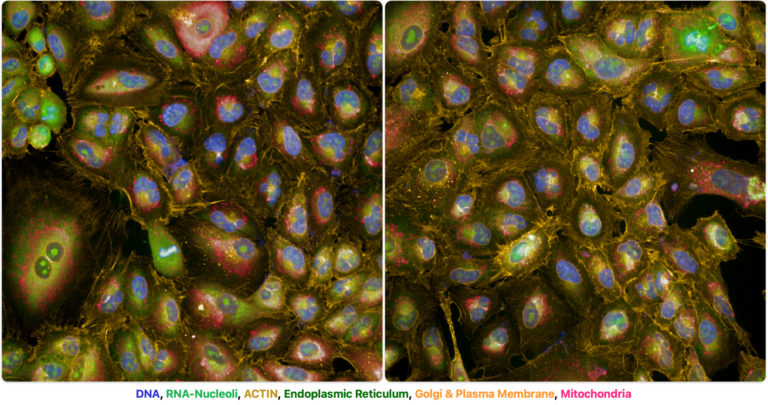
Co-culture Modeling – Compounds Targeting Specific Sub-populations of Head & Neck Tumour
Primary and Metastatic Head & Neck tumour cells were co-cultured. Compound 1 selectively kills primary cells, compound 2 selectively kills metastatic cells, and compound 3 kills both primary and metastatic cells.

Marker Expression – Compounds Inhibiting β-catenin in Colorectal Tumour
Colorectal cancer cells were stained and quantified for β-catenin expression. Compound 2 was more potent than compound 1 in inhibiting β-catenin.
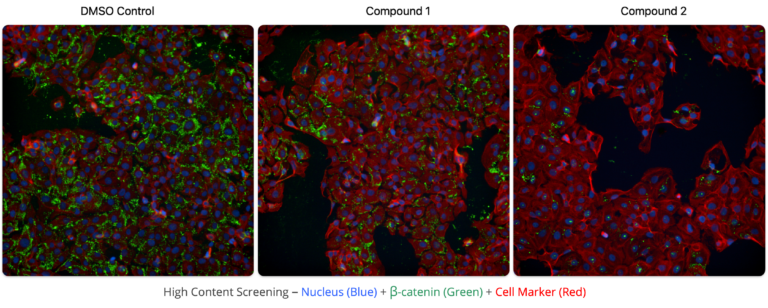
Protein Activation – Compounds Dephosphorylating ERK in Tumour
Colorectal cancer cells were stimulated to induce phosphorylation of ERK. When cells were pre-treated with compounds that can inhibit induction of pERK (Green), we found compound 2 to be more potent than compound 1.

Cellular Activity – Compounds affecting Neurite Outgrowth in Amyotrophic Lateral Sclerosis Change Negative Control to Compound 1, Positive Control to Compound 2
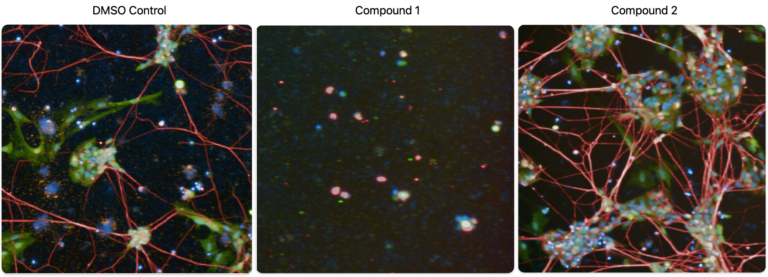
3D Tumour Spheroid Modelling – Compounds Targeting Colorectal Cancer
Colorectal cancer cells were grown in ULA plates for 4 days to form spheroids and exposed to small molecule treatment for 3 days. Compound 2 exhibits higher toxicity than compound 1.
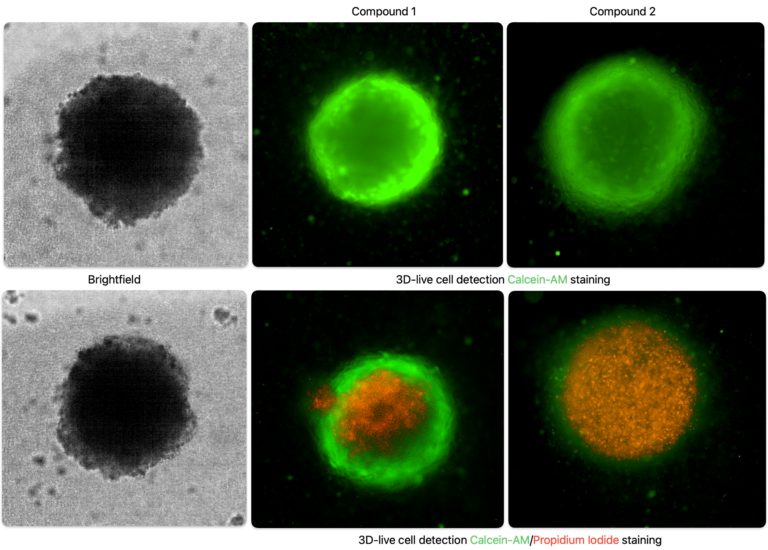
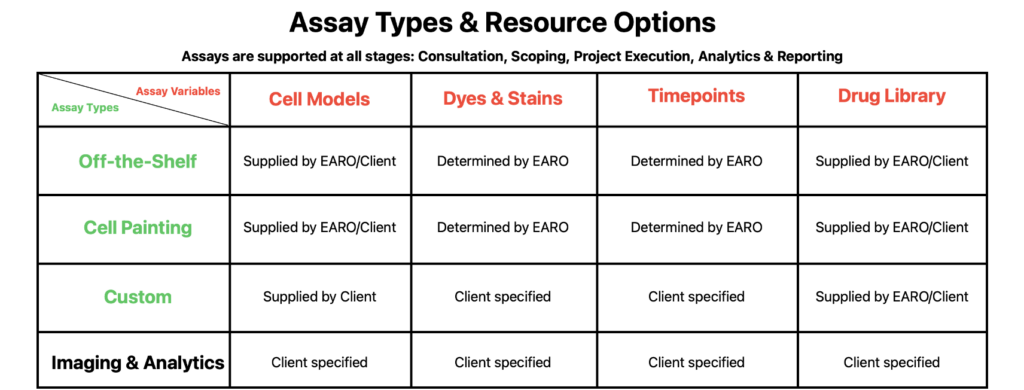
SERVICE ASPECTS
| High Content Image Based Screen | Assay Automation and Miniaturisation Expertise | Training |
|
|
|